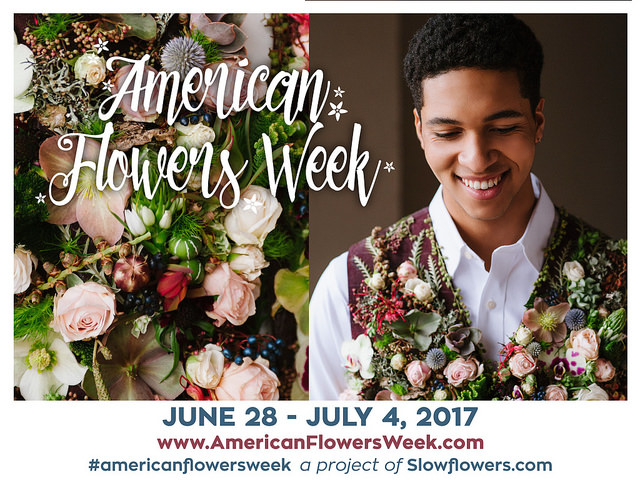6 Tips for Planning a Beautiful Spring Bulb Garden
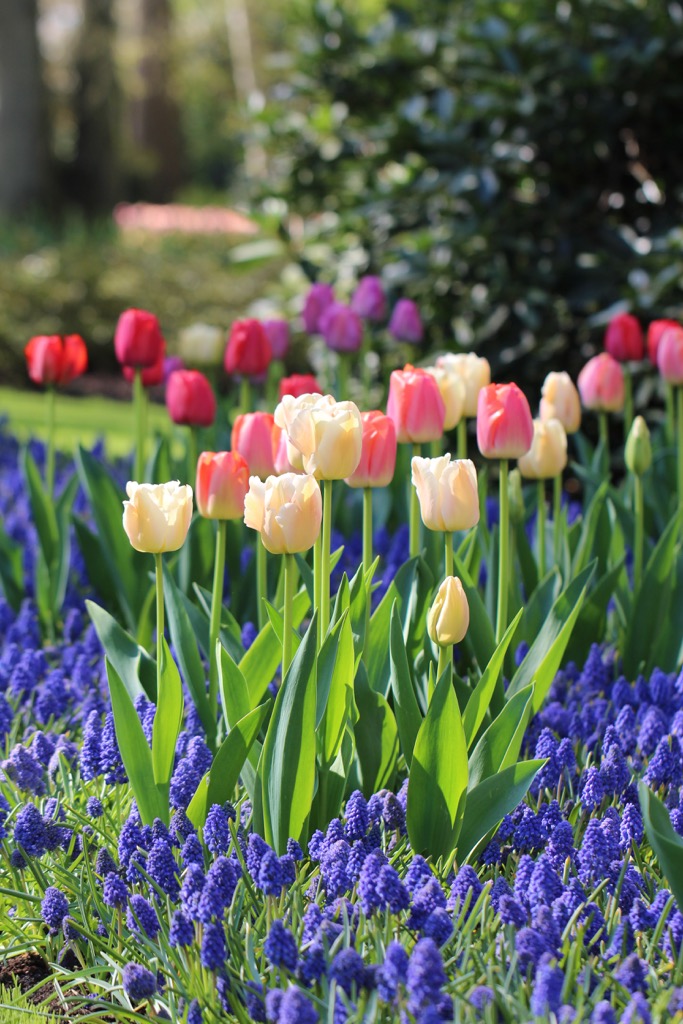
Fall is the time to plant spring-blooming bulbs such as tulips, daffodils, crocus and alliums. Before ordering your bulbs, here are a few tips to guarantee great results next spring.
Pick a Color Theme
Interior designers often work with a color palette – a selection of colors chosen to give a room or a home a particular look, mood or style. This technique is equally effective in gardens and landscapes.
One option is to choose a single color scheme. The effect is simple and always has a big impact. You can also build your design around a pair of colors such as pink and white, red and yellow or orange and purple. Another approach is to use the color wheel and choose a harmony of several related colors, such as pink, lavender, burgundy and purple or cream, yellow, orange and red.
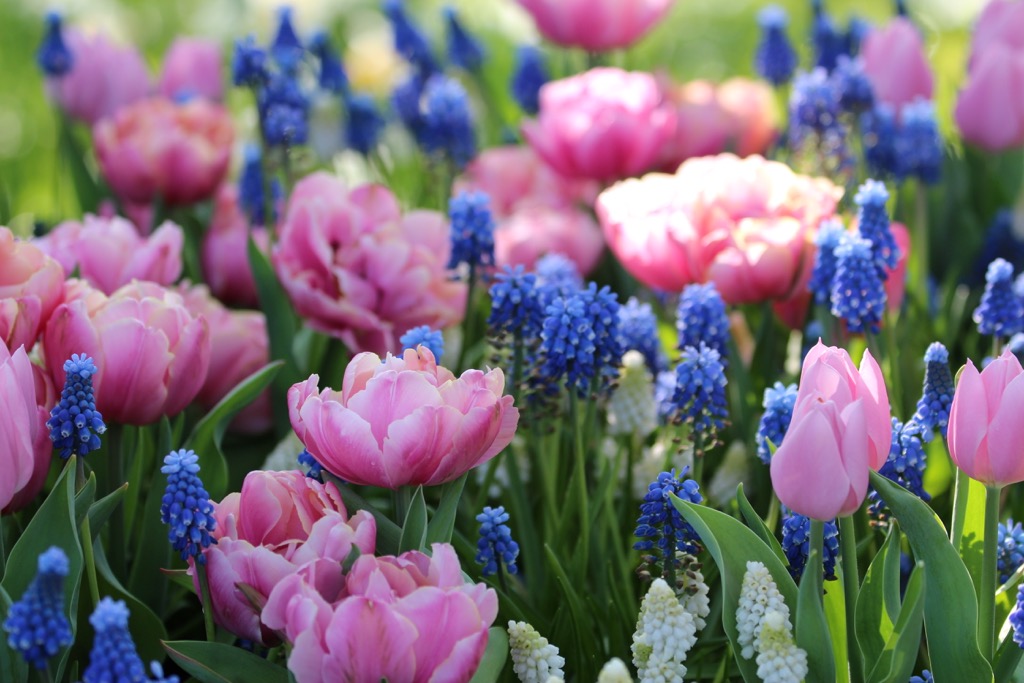
Include Different Bloom Times
From early-blooming crocuses to late-blooming tulips and alliums, the spring bulb season can stretch for as long as 8-10 weeks. When choosing your bulbs, be sure to include a few from each bloom time: early, midseason and late season. This way you’ll have flowers in bloom for as long as possible.
Plant in Groups
Spring bulbs look best when the plantings are generous and the bulbs are spaced just a few inches apart. Small bulbs such as scilla or chionodoxa should be planted in groups of at least 25 bulbs. Tulips look best in groups of at least a dozen bulbs. Daffodils and alliums can be planted in threes, though groups of 7 or 9 bulbs look even better.
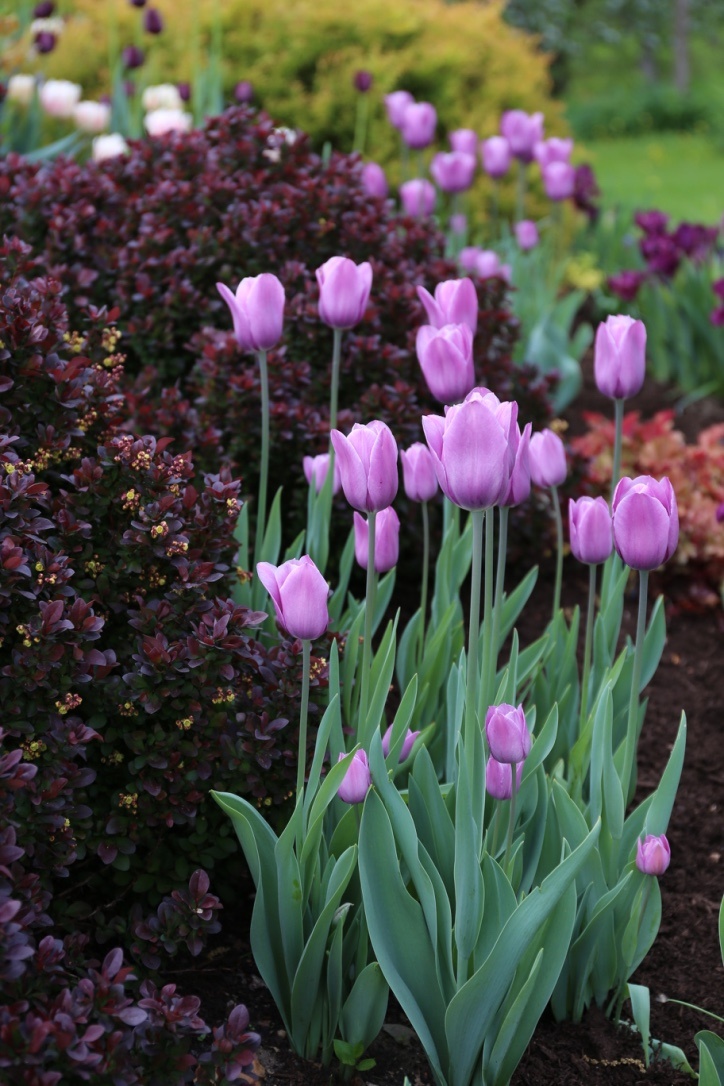
Repeat Shapes and Colors
Landscapes are more pleasing and cohesive when the same plant or grouping of plants appears in multiple locations. Our eyes connect these similar shapes or colors into one scene rather than a collection of separate elements. In a formal setting, plant in squares, rectangles or circles. For a more natural or informal look, use ovals, triangles, kidney shapes or a free-form shape that fits the location.
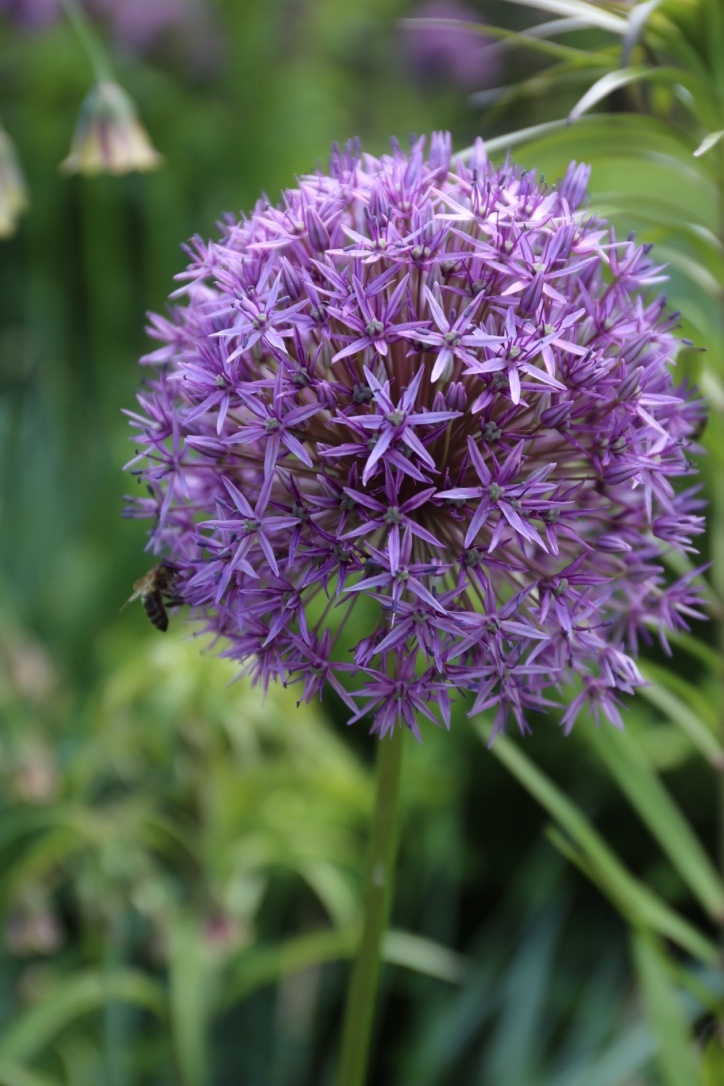
Plant Both Annual and Perennial Bulbs
Many spring bulbs, including daffodils, scilla, chionodoxa, alliums and muscari, can be considered perennials, as they will return and bloom again every spring. In fact, most of these hardy bulbs will naturalize and multiply over time.
Tulips and hyacinths are often treated as annuals because they usually put on their best show the first spring after planting. In the right growing conditions (full sun, well drained soil, hot dry summers), some tulips, such as Darwin hybrids, will re-bloom for several years. To ensure the most dramatic spring display, treat these bulbs as annuals and plant a fresh batch every fall.
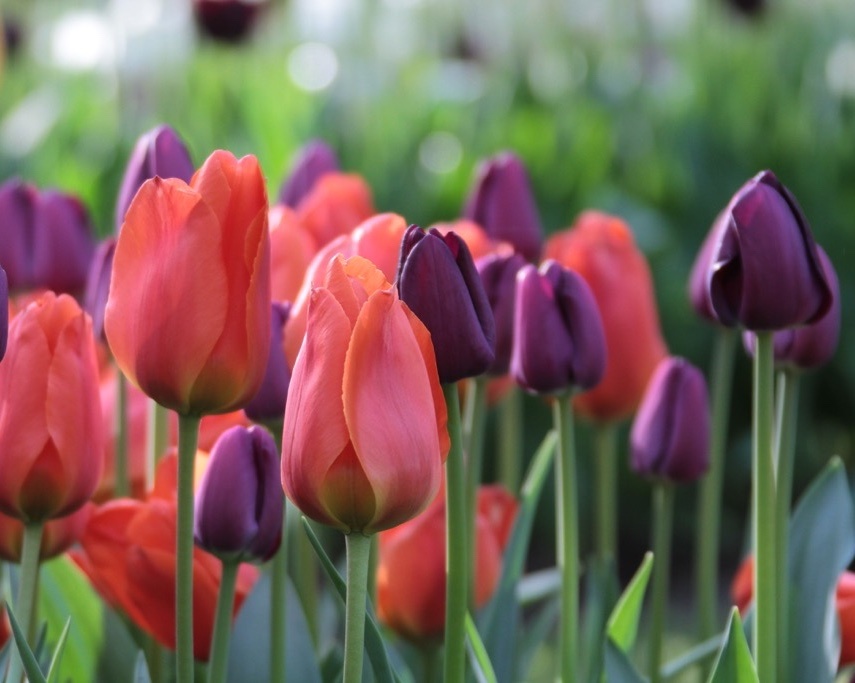
Shop for Large, High Quality Bulbs
When you are shopping for flower bulbs, pay attention to bulb size. Larger bulbs will produce bigger plants with more or larger flowers. Also remember that bulbs are perishable, so it’s important to purchase the freshest bulbs possible and store them in a cool, dry place until planting time.
To learn more, read: Landscaping With Spring-Blooming Bulbs and Tulips By Bloom Time.

